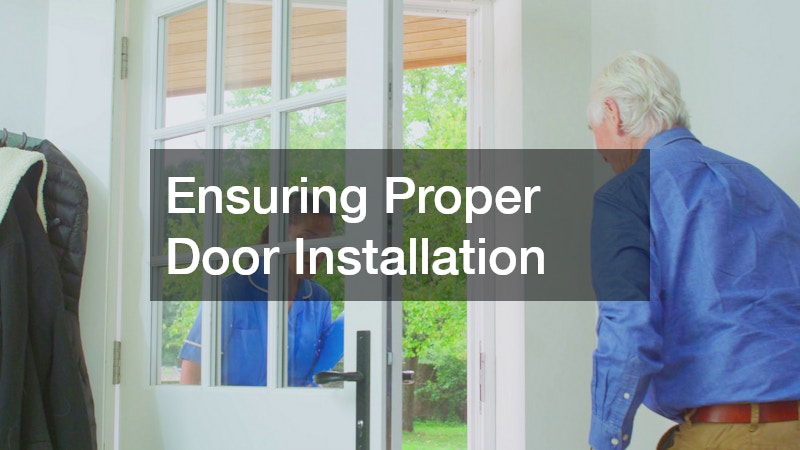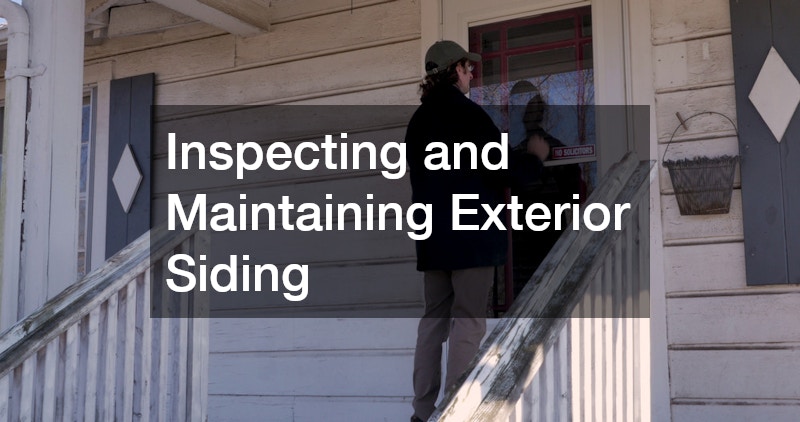As a homeowner, investing in your property’s long-term durability and efficiency is essential. Entry points, such as windows, doors, and garages, play a critical role in safeguarding your home against the elements, enhancing energy efficiency, and elevating curb appeal. Many homeowners overlook the cumulative impact that small issues at entry points can have on a house, from higher energy bills to more costly repairs down the line. By proactively maintaining, upgrading, and modernizing these areas, homeowners can ensure their homes remain safe, comfortable, and visually appealing for years to come.
Future-proofing involves planning for potential environmental challenges, adapting to emerging technologies, and selecting materials that stand the test of time. It is not just about responding to current issues but anticipating what might arise in the coming years. For instance, extreme weather events, shifting temperature patterns, and general wear and tear can all compromise entry points if preventative measures are not taken. A strategic approach ensures that your home remains resilient, functional, and attractive, while also protecting the investment you’ve made in your property. With a thoughtful checklist and careful consideration, homeowners can confidently enhance their entry points, making them more durable, efficient, and aligned with modern standards.
Selecting Durable Hurricane Windows

Windows are one of the most vulnerable entry points in any home, especially in regions prone to strong winds and severe storms. Selecting the right type of window can make a significant difference in safety, energy efficiency, and overall home performance. Hurricane-resistant windows, in particular, are designed to withstand extreme conditions, helping to protect both the interior and exterior of a house. They provide peace of mind, as their construction minimizes the risk of shattering or leaks during adverse weather events. Beyond storm protection, choosing durable windows contributes to long-term energy efficiency, reducing drafts and lowering heating and cooling costs.
When evaluating hurricane windows, homeowners should consider factors such as frame material, glass strength, and installation quality. Laminated or impact-resistant glass is typically favored for its ability to absorb energy without breaking into dangerous shards. Frames made from reinforced materials such as aluminum, fiberglass, or vinyl offer additional strength while requiring minimal maintenance. Professional installation is critical, as even the best windows cannot perform effectively if fitted improperly. By investing in hurricane windows, homeowners not only bolster safety but also enhance their home’s resilience and curb appeal, making it a worthwhile long-term decision.
Maintaining and Upgrading Existing Windows
Even if your home does not face frequent storms, windows can experience gradual wear that impacts both aesthetics and efficiency. Routine maintenance helps preserve the functionality and appearance of your windows, preventing small problems from escalating into costly repairs. Regular cleaning, sealing gaps, and inspecting for signs of moisture damage are simple yet effective ways to extend the life of your windows. Proper care ensures consistent insulation, keeps pests out, and maintains the overall comfort of your home environment.
Upgrading existing windows can also provide substantial benefits, particularly when old designs are replaced with energy-efficient models. Double-pane or triple-pane windows with low-emissivity coatings can dramatically reduce heat transfer, improving climate control and lowering utility bills. Additionally, modern windows often feature enhanced security measures, such as reinforced locks and shatter-resistant glass, providing extra protection against break-ins. By investing in maintenance and selective upgrades, homeowners can achieve both aesthetic improvements and functional benefits, creating a more comfortable and secure living space.
Ensuring Proper Door Installation

A well-installed door serves as the first line of defense against intruders, extreme weather, and energy loss. Proper door installation is essential for ensuring a tight seal, smooth operation, and long-term durability. Even the highest-quality doors can fail to perform effectively if the installation process is rushed or performed incorrectly. Aligning the door frame, leveling the threshold, and ensuring adequate insulation around the edges are crucial steps in preventing air leaks and water infiltration.
Professional door installation offers numerous advantages over a DIY approach. Skilled installers bring experience in handling different materials, hardware configurations, and building codes, ensuring that the door operates as intended. They can also identify potential structural issues that may compromise the longevity of the installation, such as warped frames or uneven floors. Homeowners who prioritize proper door installation enjoy improved energy efficiency, enhanced security, and a polished appearance, making it a key element in any long-term home improvement strategy.
Choosing a Reliable Window Replacement Company
Selecting a reputable window replacement company is critical to achieving the desired outcome when upgrading or replacing windows. A reliable company ensures that the materials, installation process, and follow-up services meet high standards of quality and durability. Homeowners benefit from working with experienced professionals who can offer guidance on materials, energy efficiency, and design choices tailored to the property’s specific needs.
When evaluating window replacement companies, it’s important to consider factors such as customer reviews, turnaround time, and the availability of warranties. Companies that provide transparent pricing and clear communication can minimize stress and ensure a smoother experience from start to finish. Additionally, a company with expertise in a wide range of window styles and materials can help homeowners make informed decisions that maximize both function and appearance. By partnering with a trusted window replacement company, homeowners safeguard the investment in their windows while enhancing their home’s overall value.
Enhancing Entry Doors With Glass Features

Incorporating glass elements into entry doors offers a balance between style, natural light, and security. Glass panels can dramatically improve the appearance of an entryway while allowing sunlight to brighten interior spaces. Selecting tempered or laminated glass ensures that these features remain durable and resistant to breakage, providing a safe and attractive enhancement to the home’s entrance.
Specific design options for entry door glass include frosted, etched, or decorative panels that complement the home’s architectural style. These designs can provide privacy while still allowing light to pass through, striking a harmonious balance between aesthetics and function. Additionally, energy-efficient glass options help reduce heat transfer, contributing to the home’s overall energy savings. By carefully choosing glass features for entry doors, homeowners can elevate the visual appeal of their home while maintaining safety and efficiency.
Planning Paver Patio Installation for Longevity
Outdoor living spaces, such as patios, are essential for both enjoyment and the long-term value of a home, and their construction requires careful planning to ensure durability and functionality. Paver patios offer a versatile, visually appealing option that can withstand frequent use and various weather conditions when installed correctly. Proper planning involves selecting high-quality pavers, considering the layout and design, and preparing a stable foundation to prevent shifting or settling over time. Homeowners must also account for proper drainage to avoid water pooling, which can damage both the pavers and the underlying base. A well-executed patio installation not only enhances the aesthetic appeal of the home but also creates an inviting outdoor environment for family gatherings, relaxation, or entertaining guests.
For a successful paver patio installation, homeowners should consider the type and material of pavers, such as concrete, brick, or natural stone, each offering distinct benefits in terms of durability, appearance, and maintenance. Interlocking pavers are particularly resilient, as they allow for slight movement without cracking, while a carefully compacted and leveled base provides long-term stability. Incorporating edging restraints helps maintain the shape and prevent spreading over time, and sealing the pavers can protect against staining, moisture infiltration, and weed growth.
Inspecting and Maintaining Exterior Siding

Exterior siding is a critical barrier against moisture, pests, and environmental damage. Routine inspections and maintenance help prevent minor issues, such as cracks or loose panels, from developing into significant problems that can compromise structural integrity. Proper upkeep also ensures that siding continues to contribute to the home’s aesthetic appeal, preserving the overall value of the property.
Maintenance tasks include cleaning debris, inspecting for mold or mildew, and repairing damaged areas promptly. Additionally, periodic painting or sealing may be necessary depending on the siding material, such as wood or fiber cement, to maintain protective qualities. By consistently maintaining exterior siding, homeowners can prevent deterioration, enhance energy efficiency, and safeguard the interior of their home from the elements.
Scheduling Regular Garage Door Inspections
Garage doors are often overlooked in routine home maintenance, yet they play a vital role in security, energy efficiency, and daily convenience. Regular inspections allow homeowners to identify and address mechanical issues, wear, or potential safety hazards before they escalate into expensive repairs or accidents. A comprehensive garage door inspection examines the door panels, tracks, rollers, hinges, and opener mechanisms to ensure smooth operation, proper alignment, and reliable functionality. Attention to detail during these inspections helps prevent minor problems, such as squeaky hinges or misaligned tracks, from developing into major malfunctions.
A proactive approach to garage door maintenance includes testing automatic openers, checking for alignment issues, and lubricating moving parts. Homeowners can also monitor the door’s balance by disconnecting the opener and manually lifting the door to ensure it moves evenly and smoothly. Identifying early signs of wear on springs, cables, or rollers can prevent dangerous malfunctions and extend the overall lifespan of the garage door system. Scheduling inspections seasonally, or at least twice a year, not only preserves the door’s performance but also enhances safety, reduces long-term repair costs, and ensures that the garage remains a reliable entry point to the home.
Ensuring Safe Garage Door Operation
Garage door spring repairs are essential for maintaining the safe and smooth function of your garage door. Springs endure constant tension and repeated cycles, making them one of the most critical components of the system. Over time, these springs can weaken, stretch, or break, leading to uneven door movement, sudden closures, or even serious injuries if left unaddressed. Prompt attention to spring issues ensures that the door operates correctly, reduces strain on other components, and maintains overall safety for your home.
Homeowners should be alert to warning signs such as loud popping noises, slower door operation, visible gaps in coil springs, or doors that feel unusually heavy. Handling high-tension springs can be extremely hazardous without professional tools and experience, so relying on expert services is strongly recommended. Professionals not only repair or replace springs safely but also inspect related hardware for wear or damage. By addressing spring problems promptly, homeowners protect their property and personal safety while extending the lifespan of their garage door system and ensuring reliable daily operation.
Organizing and Protecting Your Garages
Garages serve multiple functions, from housing vehicles to storing tools, seasonal items, and recreational equipment. An organized garage maximizes usable space, improves accessibility, and reduces the risk of damage to stored items. Effective organization includes incorporating storage solutions such as adjustable shelving units, cabinets, wall-mounted racks, and overhead storage systems, which help keep the floor clear and create a safer, more efficient environment. A well-structured garage also facilitates easier cleaning, maintenance, and entry or exit from vehicles, making it a practical and functional part of the home.
In addition to organization, protecting the garage from environmental and structural challenges is essential for long-term durability. Installing proper insulation and weather stripping around doors and windows prevents moisture, drafts, and pests from entering the space. Ensuring adequate ventilation minimizes the risk of condensation and mold growth, while regular inspections of the garage door, roof, and walls help identify potential leaks or structural concerns. Homeowners who prioritize both organization and protection create a secure, reliable, and multi-functional space that supports everyday needs, preserves valuable belongings, and maintains the overall integrity of the home.
Future-proofing your home requires careful attention to entry points, proactive maintenance, and strategic upgrades. By addressing windows, doors, patios, siding, and garages with foresight, homeowners can enhance both the safety and functionality of their property. Preventative measures, quality installations, and regular inspections prevent small problems from escalating into costly repairs, ensuring that the home remains comfortable, secure, and energy-efficient.
A long-term perspective allows homeowners to anticipate environmental challenges, adopt modern technologies, and invest in materials that will endure changing conditions. Beyond structural considerations, thoughtful planning and improvements elevate the visual appeal of a property, improve its market value, and contribute to the overall enjoyment of the home. By approaching home maintenance and upgrades systematically, homeowners create a resilient, well-maintained environment that will continue to perform optimally for years to come.
